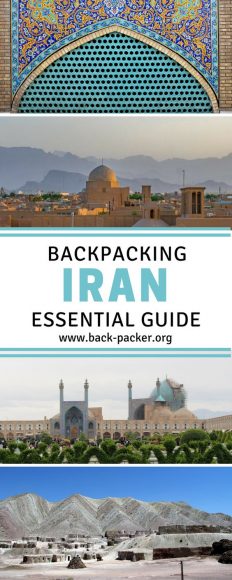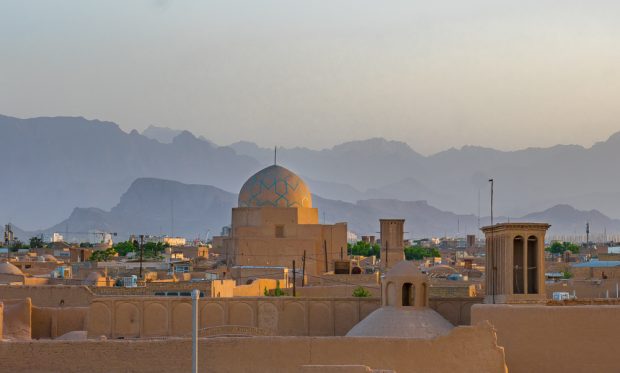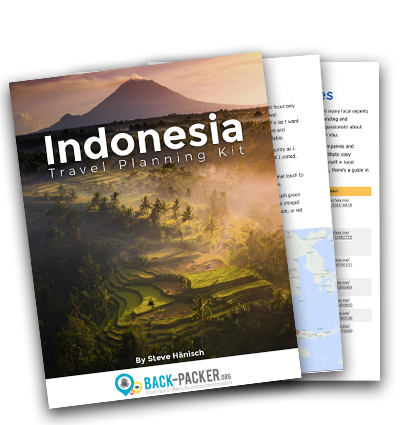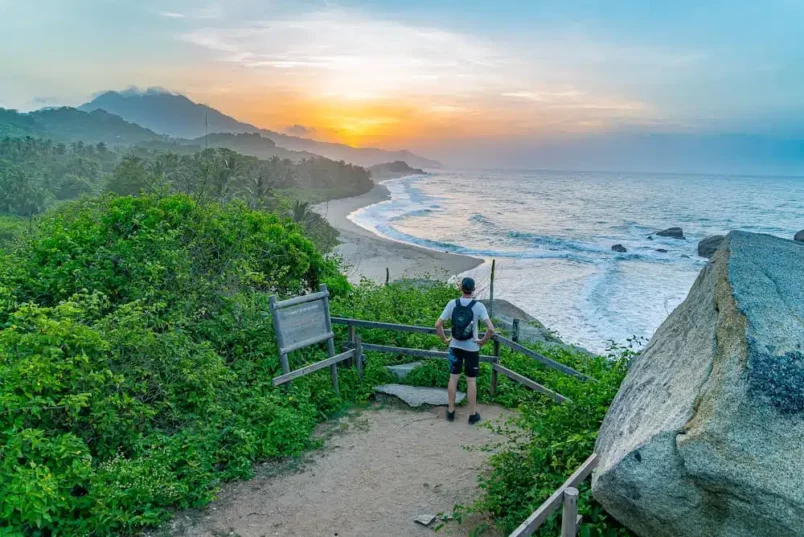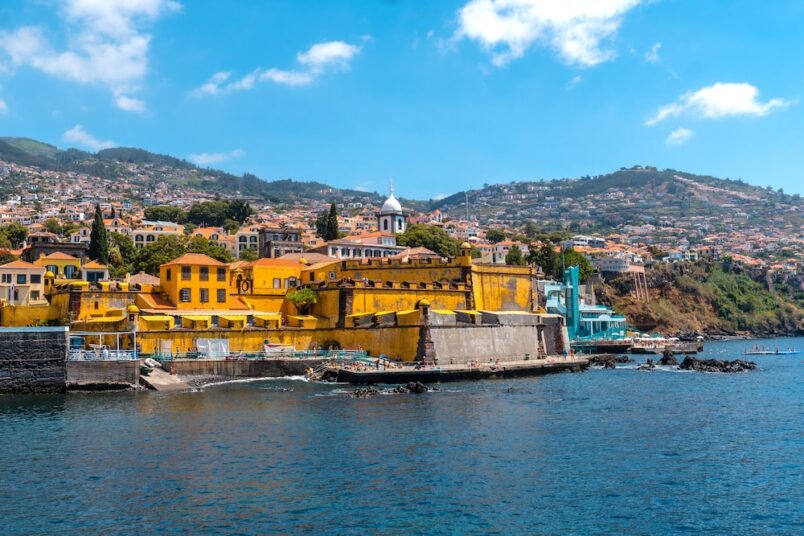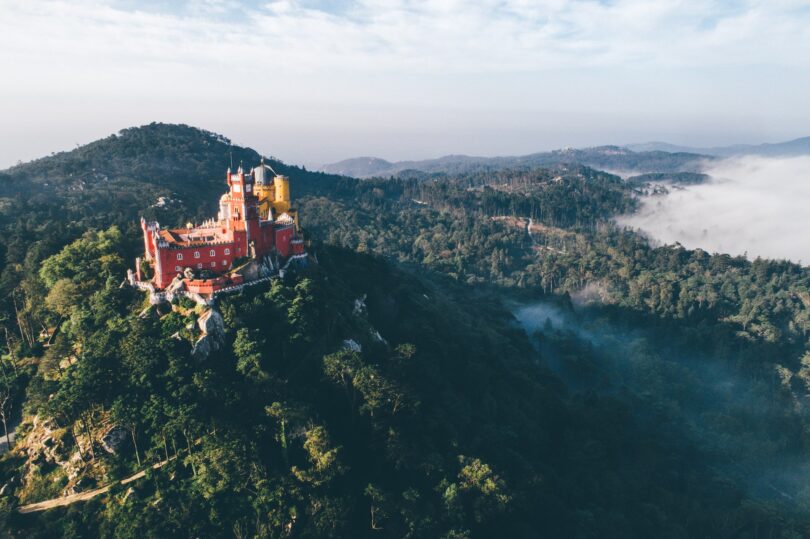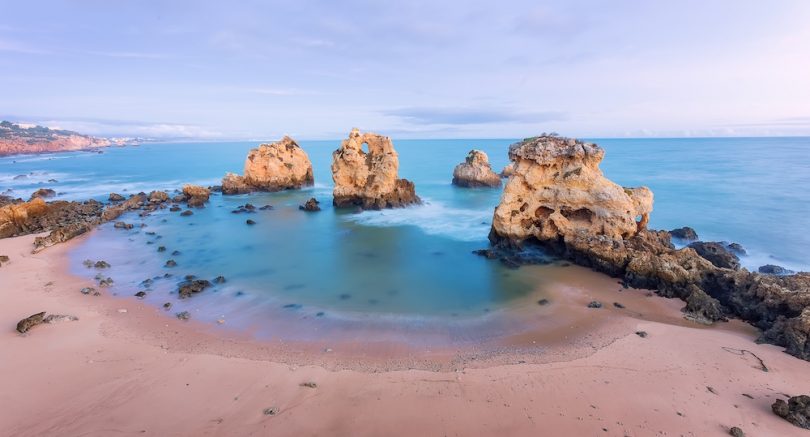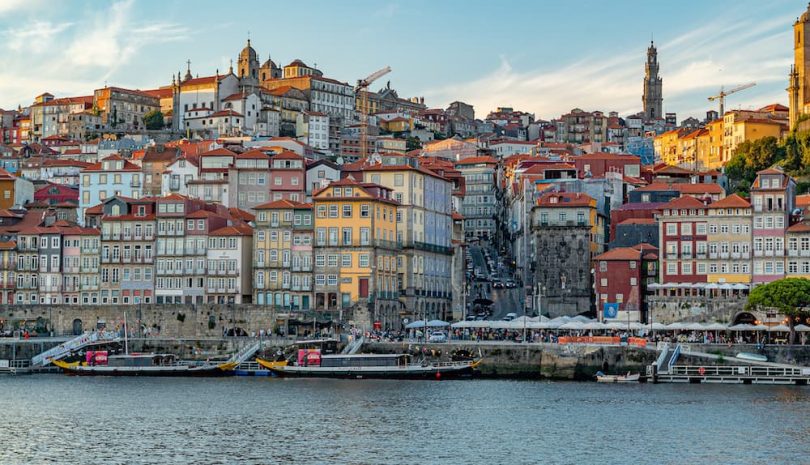In this travel guide I put together all information you need for Backpacking in Iran based on my own experience of 4 weeks traveling through the country.
During my Iran trip I planned and organized everything independently, followed recommendations by locals, made many new friends and got the chance to experience the real Iran. In this comprehensive guide I try to answer all the important questions I also had before heading on my first trip to Iran.
3. Entry requirements, Visa & Insurance
4. Language & Communication
5. Local laws & Dress code
6. Money & Budget
7. Persian Cuisine
8. Get in & local transport
9. Accommodation in Iran
10. Packing list & Backpack
12. Safety & Health
13. Tehran – the vivid capital
14. Isfahan – traditional & monumental
15. Shiraz – the diverse, cultural center
16. Yazd – die charming desert city
17. Kashan, Tabriz and Kermanshah
18. Recommended Guide
19. Video documentary series of my Iran trip
1) Why Iran?
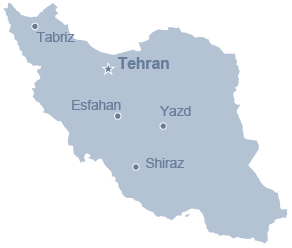
Iran is the second largest country in the middle east and looks back on an eventful history being home to one of the world's oldest civilizations. Due to its location you'll also find a big diversity in matters of the landscape: from high mountains, green forests and the coast of the Caspian sea in the north, the Persian Gulf in the south to the wide deserts in the east of the country. Another highlight is the architecture: historical buildings from the time of the Persian Empire, majestic palaces from the Shah era and monumental mosques.
The fairly stable security situation, the gradual opening of the country to the west (after the nuclear deal in 2015) and the low prices caused a boom of tourism in Iran. While travelers from the UK, USA and Canada are required to be escorted by a government approved guide at all times other tourists are able to travel the country independently.
Due to the fact that the proportion of young people in the society who are curious and open to cultural exchange is very high you can expect to be welcomed in a very friendly and warm-hearted way. If you bring some more time, come open minded and also explore spots which are off the main tourist paths you can expect to get in touch with young locals quickly and often even receive an invitation for tea. The Iranian hospitality is simply outstanding!
Furthermore you'll be surprised how modern and open Iran is on so many levels – even though the image of the country in the west and the strict local legislation might leave a different impression. For me Backpacking in Iran has been one of my best, most interesting trips in recent years!
Top [mks_icon icon=”fa-arrow-up” color=”#444″ type=”fa”]
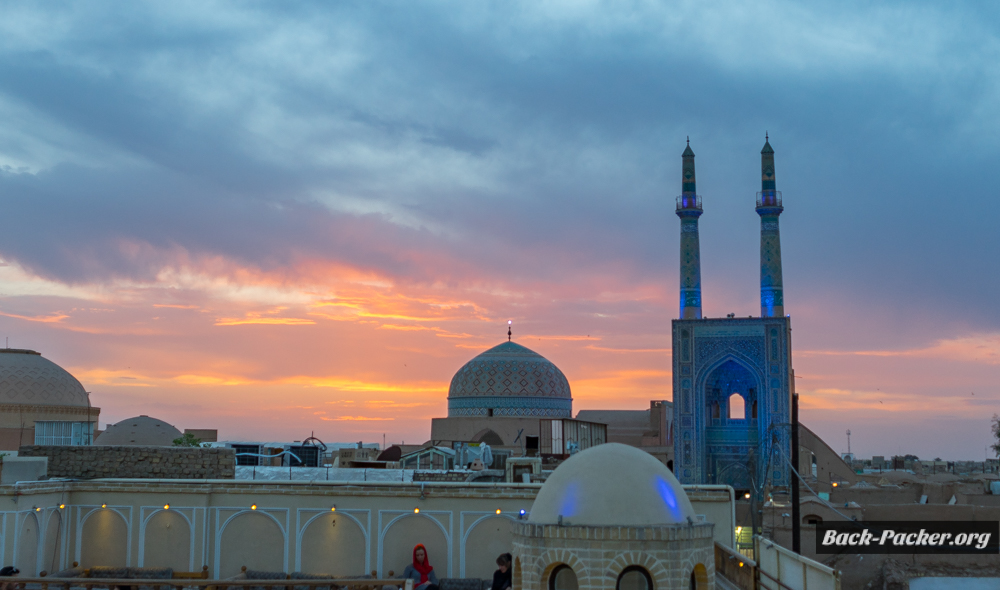
2) Weather & When to go
As stated you'll find several climatic zones: while summers are fairly cool in the mountains and the north, it is hot and dry in the center at the same time with temperatures even above 40°C! In general I advice to avoid the extrem temperatures in summer and winter. Instead you should focus on the spring and fall season.
Beside the weather you should always check national holidays as well as the time of ramadan when planning your trip (here you can find the dates for ramadan) to avoid restrictions (see below). Try to avoid especially the time around Nowruz (Iranian New Year, 20./21st of march plus 1 week after) as it is almost impossible to book accommodation for that time of year.
To sum it up: April to June (except the Ramadan period) as well as the period from September to November is the best time for Backpacking in Iran. I was traveling in Iran from April to May and had perfect weather conditions for all of the destinations I visited.
Top [mks_icon icon=”fa-arrow-up” color=”#444″ type=”fa”]
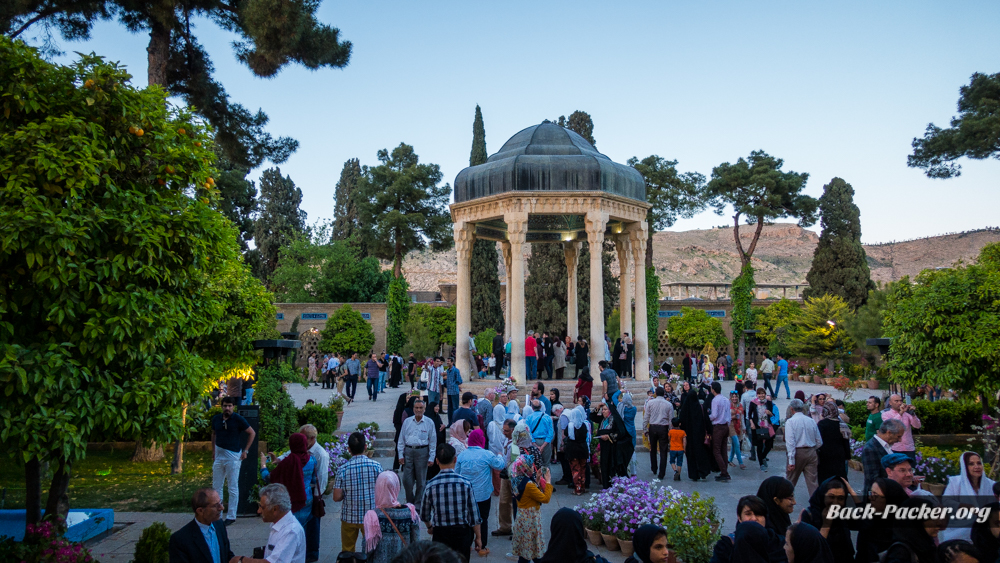
3) Entry requirements, Visa & Insurance
In most cases you'll need a visa to enter the country (only citizens of 8 countries e.g. Turkey can enter without visa). Recently entering the country became more easy with the option of Visa on Arrival for most travelers on all major airports (except for US, UK, Canadian citizens and 10 other countries).
Nevertheless I recommend obtaining a visa in advance to be sure that you can enter the country and to avoid long waiting times in the airport (you could end up spending a few hours at the airport).
How to obtain a visa
The procedure is different depending on your nationality and your travel style. If you are planning an independent trip you should prepare a day by day itinerary which states your activities and the hotel you are planning to stay at (use the Lonely Planet mentioned below or my hotel recommendations). Please make sure to organize everything well ahead of time as the visa process can take several weeks.
In case you are German you should head to the German version of this article where I state documents needed and describe the whole process step by step for German citizens based on my experience.
If you are booking a tour through an agency you should contact them first as they might take care of it or assist you in the process. Please check with the ministry of foreign affairs / department of state and the Iranian embassy in your country for the procedure and documents needed to apply for a visa:
- Entry requirements UK citizens
- Entry requirements US citizens
- Entry requirements Canadian citizens
- others: please visit the website of your ministry of foreign affairs and the Iranian embassy in your country
Get a travel insurance that covers Iran
One of the requirements to obtain a visa in the first place is a proof of a travel insurance that covers you in Iran for your desired travel dates (you need to bring a print of the confirmation).
Top [mks_icon icon=”fa-arrow-up” color=”#444″ type=”fa”]
4) Language & Communication
Farsi is the language spoken in Iran, it is rather hard to get around with English as only a few people (mostly young people or guides) will be able to understand you. The language barrier is one of the challenges you'll face backpacking in Iran but you can make up for that by using hand gestures, charme and goolge translate in most cases 😉
In general you'll find young people speaking at least a base level of english mostly in big cities. But I also met a few Iranians who had a more advanced level of English due to the fact that they worked in tourism or had a high motivation to learn the language. Nevertheless you'll most likely be approached quite often in the streets to have brief small talks with locals starting with them saying “Welcome to Iran!”.
You should always keep in mind that you are -in a way- also an ambassador for your country. Making an effort to learn at least a few standard phrases and the numbers from 1-9 will go a long way:
- Hallo – Salam
- Yes – Bale
- No – na
- Please – lotfan
- Thank you – merci / mamnun
- What's your name? – Esm e shoma chist?
- My name is *** – *** hastam.
- How much is it? – Gheymatesh chand ast?
- I'm from Germany – Man az Alman hastam
- Is there anybody who speaks english? – injâ kas-i Engelisi midânad?
- 0 – ۰(sefr)
- 1 – ١(yek)
- 2 – ۲(do)
- 3 – ۳(se)
- 4 – ۴(cha)
- 5 – ۵(panj)
- 6 – ۶(shesh)
- 7 – ۷(haft)
- 8 – ۸(hasht)
- 9 – ۹(noh)
Having local friends also helps on your travels through the country. I often used Couchsurfing to meet up with locals and to develop a better understanding of the country. In hotels and guest houses I also asked my hosts / employees to help me with directions, cabs and restaurants as well as things to do in the area.
Top [mks_icon icon=”fa-arrow-up” color=”#444″ type=”fa”]
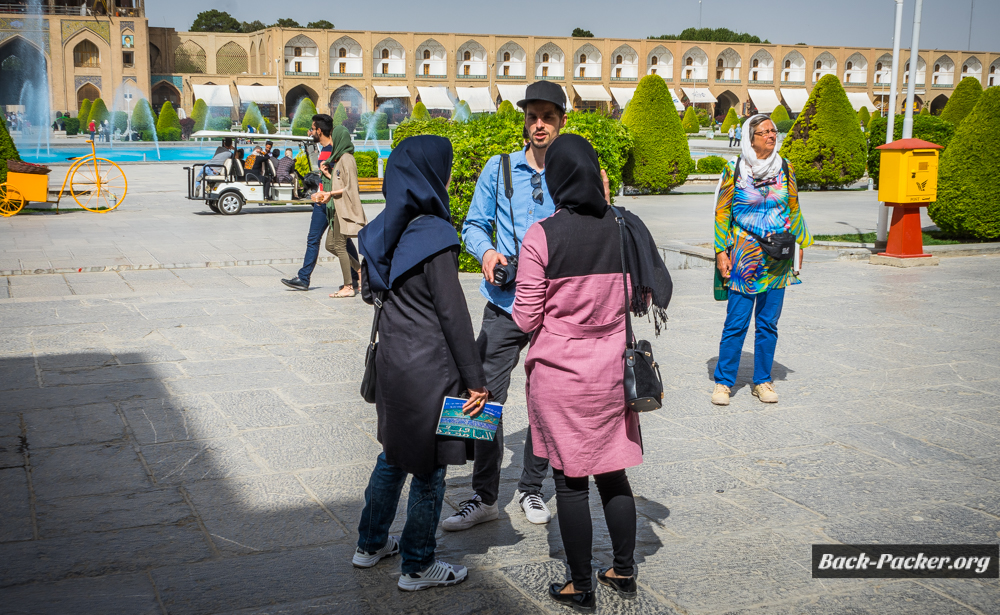
5) Local laws & Dress code
Iran is an islamic republic – this means that the islamic law, the sharia, applies and is enforced partially very strictly.
Important rules of conduct
Of course also tourists need to be aware of the local laws and need to follow them – otherwise one can face strict punishments:
- alcohol is strictly forbidden:
For many travelers this seems to be a big thing but you could also use your trip to Iran for a healthy detox this way 😉 - drugs are strictly forbidden (long-term prison sentences!)
- homosexuality is forbidden
- woman need to follow the islamic dress code (see below)
- be cautious with physical contact between man & woman in public:
you shouldn't kiss or hold hands in public but in more liberal areas e.g. in Tehran a simple hug for saying goodbye is widely accepted. In more conservative areas being a man you should avoid sitting next to a woman you are not related to. - sexual relations between unmarried couples are illegal:
if you are traveling as an unmarried couple you should cheat a bit when checking into a hotel and tell them that you are married 😉 - dancing in public is sadly also forbidden:
…but widely practiced at private parties - during ramadan stricter rules apply:
eating/drinking, smoking and the use of perfume in public is forbidden between sunrise and sunset - blowing your nose in public is a taboo
- avoid photographing or filming public and military buildings at all costs
- same goes for having political and/or religious discussions
- friday in Iran is the day of rest:
most shops, banks and exchange offices are closed on fridays whereas parks, sights and restaurants are very popular and can be crowded at times
This might sound very hard in the first place but the truth is that the every day life is way more relaxed than you might think (tourists also have a tiny bonus). In general especially the younger generation in Iran is very open to the western lifestyle and is bothered by many of the rules. This is why you often divide into the public life and the private life which takes place behind the curtains and is often very similar to our lifestyle.
Regarding the dress code you'll also encounter a partially very relaxed, surprising interpretation of the rules when wandering the streets of Tehran with all its fashionable people 😉
Dress code
When in public woman need to cover their head with a head scarf (hijab), wear a wide tunic / tank top layered up with a light cardigan which covers décolleté, arms, bum and goes down to the mid-thigh. A chador isn't necessary except in some mosques where you can borrow them for the time of your visit.
As stated some Iranian women practice a fairly relaxed interpretation of the dress code, especially in Tehran: here you can observe make-up being used widely, the head scarf is rather loose, tops are more figure-hugging and often accompanied by a stylish manteau and sometimes even skinny jeans.
But also men should dress appropriate, preferably long shirts and long pants. Whereas T-Shirts are widely accepted shorts are not very common, even when it is boiling hot. In general you should dress well as clothing plays an important role in Iranian society.
Taarof
Taarof is an Iranian form of civility emphasizing both deference and social rank. It can be quite confusing and embarrassing for tourists if you don't know about it.
Taarof is all about showing respect for someone by not asking for money for service or goods in the first place…but taking and appreciating it after the person facing taarof is insisting to pay. As a tourist it means you should always insist on paying at least 2-3 times until you can be sure that is meant to be free of charge.
If you are not sure you should say “Taarof Nakonid” (no taarof). Because I don't look like a local at all I didn't have to face taarof that often.
Hospitality
This word is being written in bold, capital letters in Iran especially for foreigners. During my Iran trip I got invited to countless cup of tea's, dinner, barbecue's and private parties and always had a great time. Even in the bus I got handed snacks and even sandwiches by friendly locals who sat next to me.
If you happen to get invited during your travels your hosts will always insist to cover all costs for you (this is rarely meant to be Taarof!). If you are invited to parties or dinner it is common to bring some snacks or drinks as a nice gesture. If you happen to be the host you should be as hospitable as Iranians!
Top [mks_icon icon=”fa-arrow-up” color=”#444″ type=”fa”]

6) Money & Budget
The local currency in Iran is “Rial” and looks back on an inflationary history. This is why I became a millionaire after exchanging only 25€! Having said this the whole money topic is a bit more complex – in this section I'll talk about all the things you should be aware of and the budget you should be calculation when traveling through Iran independently.
Rial and Toman – the confusion about the missing/added ‘0'
Even though the official currency is Rial, people calculate prices in “Toman” in everyday life. Toman is a pseudo currency where a zero is being deleted from the original amount in Rial (10.000 Toman = 100.000 Rial).
Example: if the costs of a cab ride are stated with “40.000 Toman” you'll need to pay 400.000 Rial.
Withdraw money & credit cards? Not in Iran!
It is all about cash. Due to the sanctions in the past the country is still not connected to the western finance system making it impossible to transfer or withdraw money let alone the usage of credit cards. This is why you need to bring all the money you need for your trip in cash (preferably 50$/100$ bills) and exchange it into the local currency.
I used a money belt to store my cash safely during my travels through Iran.
Exchange office or Bank?
The exchange rate in Iranian banks is most likely worse than in exchange offices. Make sure to ask for recommendable exchange offices in your hotel / hostels and change your money there. Avoid changing money on the street!
How expensive is traveling through Iran?
It is hard to answer this question as it depends on many factors but in general Iran is a very budget friendly destination. During my trip I could stay mostly in mid-range hotels or guest houses, take cabs, eat out on a daily base and only paid about 400-500€ per week including admissions and tours.
Of course you can have it way cheaper when you stay in dorms, avoid cabs and don't eat out that often. Here is a list of costs in € to give you a better understanding and to provide a base for your calculations:
- Accommodation: double for 40-50€ (Hotel, incl. breakfast), double for 20-25€ (trad. guest house), 8-12€ (hostel, dorm)
- Long-distance bus (VIP): 9€ for Tehran – Isfahan (7h) incl. Snack
- Night train (sleeping compartment): 10€ for Yazd – Tehran (8h) incl. Snack
- Eating out: 5€ incl. drinks (grill / local restaurant), 10€ incl. drinks (quality restaurant), 1-2€ for a snack (Falafel, Sambose)
- Admission: 5€ (attractions like special mosques), 10€ (palace complex e.g. Golestan palace)
- Taxi: 3-4€ (ride in city center e.g. hotel to bus terminal)
- Tours: 25€ p.P. for desert tour in Yazd (transfer, guide, food, activities)
Top [mks_icon icon=”fa-arrow-up” color=”#444″ type=”fa”]
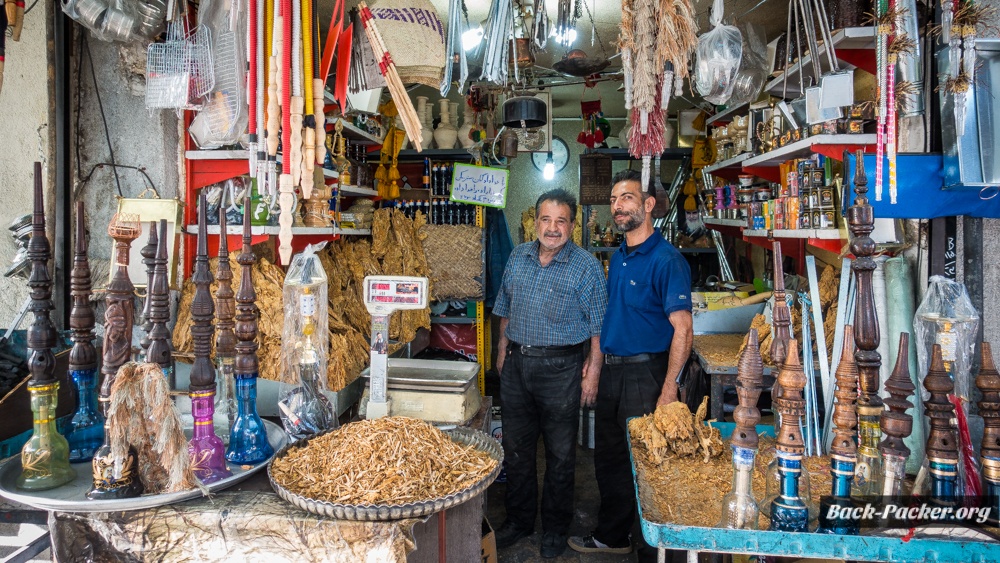
7) Persian Cuisine
At first glance the persian cuisine seems to be dominated by the national dish “Kabab” but there is so much more waiting for you if you dig deeper. During my travels I got to know new dishes in each region and was blown away by the diversity. Doing your research for good, recommendable restaurants (e.g. by asking locals or in your hotel) definitely pays off. You can find my restaurant recommendations inside my travel guides and videos.
My favorite dishes
The sweet-sour “Fesendschan” (chicken in a brown sauce made out of grounded walnuts, pomegranate and spices), Tahchin (baked safran rice with pomegranate, eggs, yogurt and chicken or vegetables), Ghormeh Sabzi (green stew with herbs and lamb/beef), Dizi (stew with vegetables and meat) and of course the national dish “Tschelo Kabab” (grilled lamb meet on a stick with steamed rice).
If you get invited to a private dinner / lunch you should definitely go for it as all the mentioned dishes are way better if cooked homemade. All dishes usually come with bread, the better the restaurant the better the bread.
Vegetarian dishes in Iran
Sometimes this needs a bit more planing but there is a selection of very tasty vegetarian dishes in the persian cuisine: Kookoo Sabzi (herb fritatta, mostly served with yogurt), Mirza Ghasemi (tasty eggplant mousse with tomato, garlic, eggs, olive oil and spices), Budemjan (several variations – stew with eggplant and vegetables which usually comes with rice) or Shirazi salad (tomatoes, onions, cucumber and parsley). In matters of snacks you'll find many falafel street food places and in fast food places you can always ask vor a vegetarian pizza (“Pizza Sabzi”). Other good spots are the many hipster coffee places in the big cities which usually offer a selection of vegetarian snacks / meals.
Drinks & Ice cream
There is nothing like a good cup of tea in Iran…at any time of the day!
If you are looking for cold drinks you should order water or doogh (iranian version of Ayran) for your meal. Apart from that you shouldn't miss out ordering a freshly made juice at one of the many juice places (usually not more than 1€). If you can not do without beer you need to order a non-alcoholic beer – but I highly recommend the malt beer (I especially liked the “Istak”).
Regarding deserts the Iranians are crazy for ice cream – they love safran ice cream as well as Faloodeh, a spaghetti ice with lemon taste which can be found on every corner.
Top [mks_icon icon=”fa-arrow-up” color=”#444″ type=”fa”]
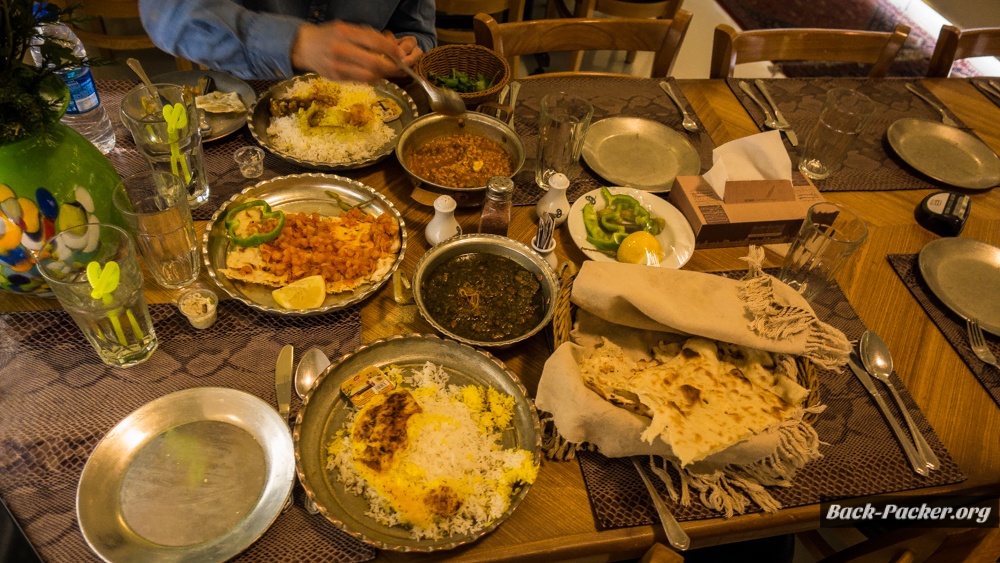
8) Get in & local transport
There are many regular flight connections with established international airlines – especially between destinations in Europe and Iran. Istanbul and Dubai are the major hubs for flights to Iran but the national airlines such as Iran Air and Mahan Air are expanding their network constantly.
I flew with Turkish Airlines from Hamburg to Tehran via Istanbul and paid about 400€ for the round trip and can only recommend it.
If you want to book with the Iranian airlines you should do it via a travel agency as also these airlines are affected by the restrictions in matters of bank transfers – an online booking is therefore hard to execute.
Domestic flights in Iran
If you are short on time you should consider this option to cover long distances. Domestic flights are fairly cheap, even days before the actual flight you can get tickets for 30€-50€. You can book easily using a travel agency in Iran.
Long-haul busses
The bus is the most uncomplicated, budget friendly and common way of covering long distances in Iran as you can purchase tickets even shortly before departure at the bus terminal (depending on the city and time of travel you might need to reserve tickets one day ahead e.g. via your hotel).
Make sure to book the “VIP Bus” for longer distances – these offer more comfort with very wide armchairs, more legroom, air conditioning and snacks (little box with drinks and sweets). A ticket usually doesn't cost more than 12€ for a 6-8h bus ride.
Train
I highly recommend taking the night train for the route between Tehran and Yazd or vice versa as you save time and money for a hotel. You can book a spot in a sleeper train (sleeping compartment with 6 beds) including a tiny snack box for not more than 12€.
You need to book trains well ahead of time, you can find an overview of the train network and the schedule here. To book your ticket you also need to contact a travel agency in Iran or ask your hotel for assistance.
Taxi
The cab is usually the best and easiest way to get around in the cities. But you should always consult locals before your ride to know the normal price of your route (ask at the restaurant or your hotel) and fix a price with the cab driver before you get in. In general you shouldn't pay more than 2-4€ for a ride in the city center.
Be aware that there are normal cabs, shared taxis and private taxis (basically everyone in Iran can be a taxi driver).
Metro
In Tehran using the metro is the best and cheapest way to get around due to the heavy traffic in the capital. A one way ticket is only 0,20€.
The islamic rules also apply in public transportation which means that also here usually men don't sit next to women they are not related to. In the metro there are special compartments for woman but woman are also allowed to enter the other compartments.
Snapp
Snapp is the Iranian version of “Uber” where you enter your position and destination in an App – afterwards you get a price quote and can request a driver. The best thing about it: it is way cheaper than using a taxi, you have a fixed price beforehand and you get to know interesting people.
Even though the App is available in English (for Android and iOS), I recommend having a local by your side when ordering (e.g. hotel reception, waiter) to communicate with the driver where to pick you up exactly. I used this service about 15 times and covered partially very long distances (from the north of Tehran to the center) and had only 1 driver who had problems navigating through the city.
Top [mks_icon icon=”fa-arrow-up” color=”#444″ type=”fa”]

9) Accommodation in Iran
For booking your accommodation ahead of time you also need to go back to the roots. For the reasons mentioned above online bookings are only possible for very expensive hotels. Therefore you need to get in touch with hotels, hostels or guest houses via e-Mail in order to reserve a room.
Furthermore you should be aware of the fact that only a few hotels offer western toilets. In Iran squat toilet – shower combinations are common in hotel bathrooms.
You can find my recommendations for accommodation in Tehran, Isfahan, Shiraz and Yazd in my list of recommended accommodation options around the world (sorted by country) as well as in the travel guides for each city I visited. In general you have the following options when backpacking in Iran:
- Hostels:
The concept of hostels is rather new to the country but you can find some good options in the popular destinations. The hostel chain “Seven Hostels” (Teheran, Kashan, Isfahan, Shiraz) and “See you in Iran” (Tehran) are the pioneers in the Iranian hostel business. You can get a bed in a dorm starting at 12€. - Hotels:
The most common accommodation option for tourists, sadly the value offered for the price isn't the best as there is a shortage of hotels at the tourist hot spots. But there are special deals you can get if you book through your hotel or a local travel agency. The rule of thumb is that you shouldn't pay more than 40-50€ for a double in a mid-range hotel with breakfast included (prices are sky rocketing during high season!). - Guest Houses:
Regarding single and double rooms you find the best value for your money here. Traditional guest houses are the most common accommodation option for locals. Those houses are mostly very beautiful buildings with an inner courtyard. Due to the language barrier traditional guest houses are often harder to book but there are a few where english is spoken. Try to get hold of a local who can help you with your booking. - Couchsurfing:
Officially Couchsurfing is forbidden, therefore you should be more careful if you want to use the service. Nevertheless you can find a huge community in Iran and especially in Tehran but you need to use a VPN to access the website. Couchsurfing offers you the chance to dive into the local culture and is a great option in liberal cities such as Tehran or Shiraz.
During the high season (April – June) I recommend booking your accommodation way ahead of time for popular destinations such as Shiraz. Luckily I was able to organize all my stays except for Tehran only 1-2 days ahead of time – only in 1 case I needed to go for an overpriced hotel I didn't like.
Top [mks_icon icon=”fa-arrow-up” color=”#444″ type=”fa”]
10) Packing list & Backpack
Even though I was traveling through Iran for almost 4 weeks I only took a carry on backpack with me which worked out very well. Especially if you are planning on doing a round trip through the country this comes in handy as you only need to drag around one piece of luggage.
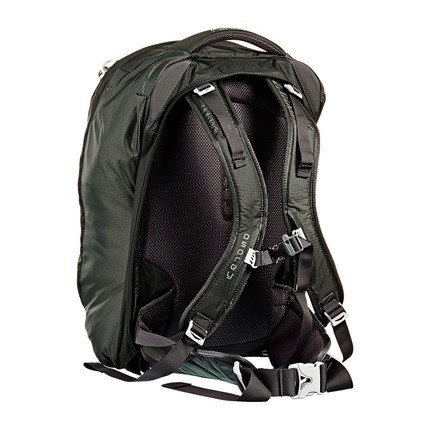
Right now I'm working on a detailed packing list for Iran which I'll soon link here. Until then you can use my packing list for city breaks and extend it a bit to prepare for your trip:
Top [mks_icon icon=”fa-arrow-up” color=”#444″ type=”fa”]
11) Internet, Apps & local Sim
The good news is: mobile data is very cheap in Iran and 4G is available in many cities. Therefore I recommend buying a local Sim to use Apps like Maps (to navigate), Google (research dishes and ingredients) or Snapp (Iranian Uber).
local Sim & Data packages
I bought a local Sim from “Irancell” right after my arrival at a kiosk in Tehran for about 10€ which included some credit. But you need to have a local friend who can assist you choosing the right data package by navigating through the menu as it is initially in farsi. With the credit you have on your account you can buy several data packages and only pay round about 1€ per 1GB data. If you don't have a local friend to help you I recommend going to an Irancell shop in a bigger mall – by using Google Translate you can ask the employees to book the right package for you.
After you set it up you can top up your credit by buying number codes at kiosks at any time and book new data packages. Easy.
Proxy
Unfortunately many western websites and apps are blocked in Iran for various religious or political reasons. This goes for social networks such as Facebook or Couchsurfing but also for many western news sites. Often you can use proxy servers to bypass those restrictions. The downside: it will slow down you internet usage dramatically as the traffic is routed through a third party server abroad.
I personally always use the paid service of “PureVPN” (fast & reliable) but there are also free alternatives such as “TurboVPN” and “HideMe”. In general I recommend using a VPN at any time you exchange personal data due to high state surveillance.
Telegram / WhatsApp
While WhatsApp is the most popular Messenger in Europe the leading service in Iran is called “Telegram”. Telegram offers the same functionalities as WhatsApp but is the first choice for young Iranians.
Snapp
The Iranian “Uber” can be used in large cities such as Tehran.
Maps.Me
This is an offline Map App where you can download Maps for certain areas beforehand and use them for navigation without needing to have an internet connection. Great for rural areas without reception!
Google Translate
Google Translate comes in very handy to translate phrases and display them in Arabic script (if you turn the smartphone to landscape mode it displays the translated phrase fullscreen).
Instagram
For Iranians Instagram is more popular than Facebook as -so far- the App isn't blocked (yet) in Iran. During my time in Iran I got many recommendations for restaurants and things to do via Instagram from locals through the DM function. Instagram is also a great tool to find good photo locations!
Top [mks_icon icon=”fa-arrow-up” color=”#444″ type=”fa”]

12) Safety & Health
Generally spoken Iran is a very safe country to travel and most likely the safest country in the whole region (as of june 2017). Due to its location you should avoid border regions to certain countries and always get the latest information of the ministry of foreign affairs / department of state of your country of origin:
- Travel advice for UK citizens
- Travel advice for US citizens
- Travel advice for Canadian citizens
Concerning my personal perception of security I only can think of very few places in the world I felt more safe than in Iran. Overall there is very little crime in Iran as the laws are pretty strict and punishment even for little crimes can be very hard. As in other countries I always recommend following the general traveling advice:
Health
As stated above you need a health insurance that covers Iran to enter the country in the first place but it is also important to have you covered in case anything happens throughout your trip. I recommend the insurance by WorldNomads which has always been a reliable choice on my travels and covers Iran – you can use the calculator on the right hand side to get a price for your trip!
As of the time of publication there is no special vaccination needed for Iran. The medical care in Iran isn't as good as in western countries but very decent in the capital Tehran. For up to date medical information I also recommend checking with your ministry of foreign affairs (see links above).
Top [mks_icon icon=”fa-arrow-up” color=”#444″ type=”fa”]
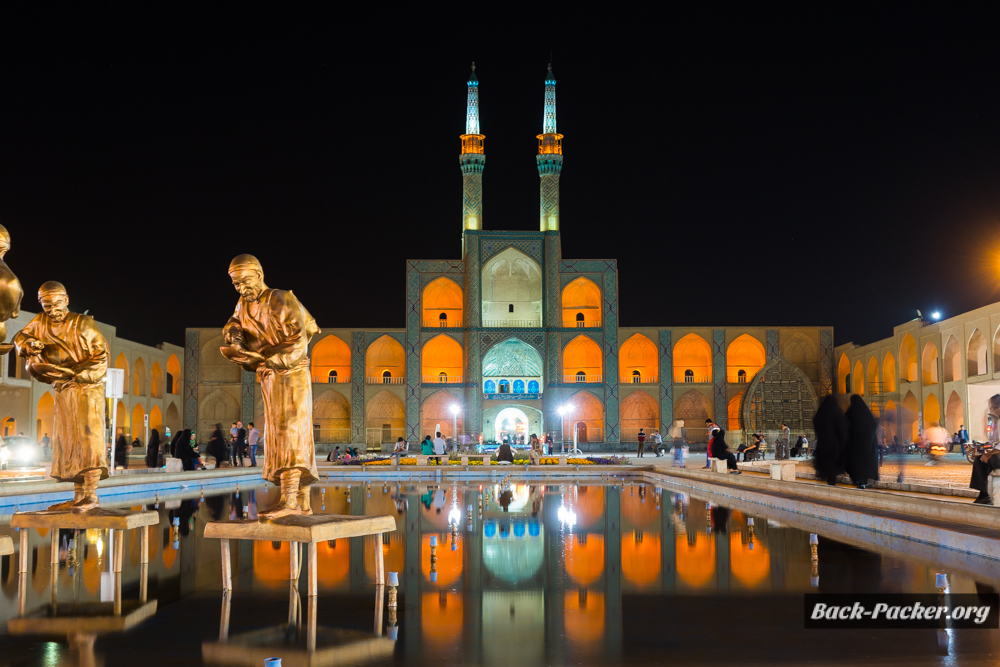
13) Tehran – the vivid capital
For the majority of travelers Tehran is the first stop but most only spend 2 days on average here. If you look a bit closer you can see that Tehran is much more than a hustling & bustling metropolis with traffic jams throughout the city.
Actually you can explore a modern, diverse capital with open minded locals who often live a lifestyle similar to ours. On top of that Tehran has a huge mountain range right in its backyard. The capital is the best place to get in touch with locals (Couchsurfing meetings are very popular) and the chances to take a look behind the curtains are the highest here.
In matters of sights and attractions you'll also find a wide selection: beside the palaces you should visit the Grand Bazaar, monuments like the Azadi tower, the Tabiat bridge, the Milad tower and of course the mentioned mountains in the north of the city. You'll also find some of the best restaurants and cafés in Tehran.
Right now I'm working on an in-depth guide on Tehran – until then you can take my video guide on Tehran for recommendations and suggestions of things to do (see below)!
Top [mks_icon icon=”fa-arrow-up” color=”#444″ type=”fa”]
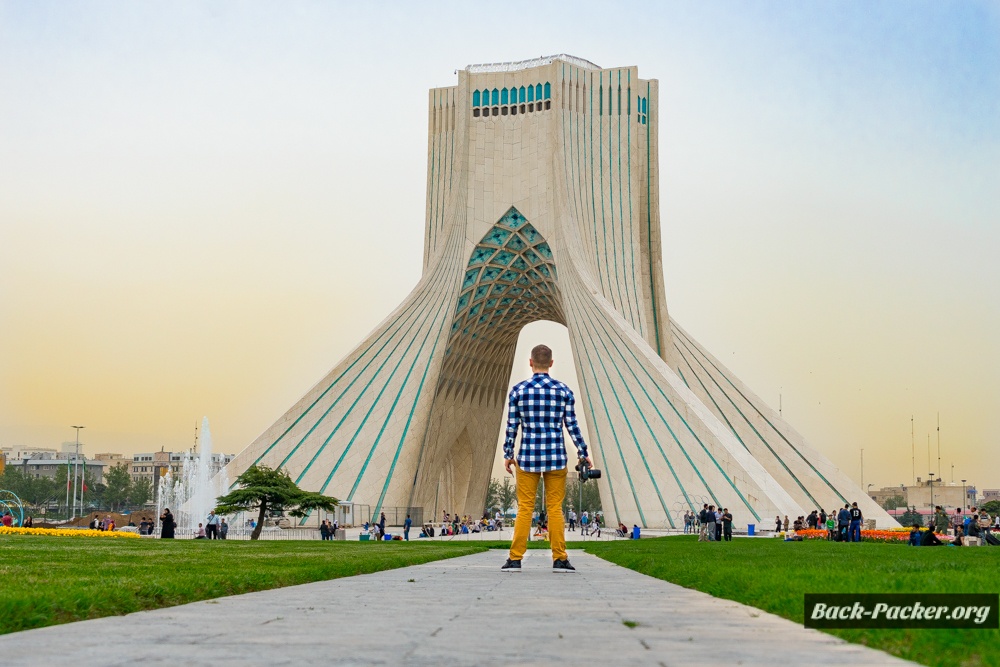
14) Isfahan – traditional & monumental
Isfahan is known to be one of the traditional, conservative centers within the country. It used to be the capital during the Safavid era therefore you can find many impressive monumental buildings as the city was completely reconstructed during that period. You should plan at least 2 days to explore the city in a more relaxed way.
Apart from the overwhelming huge central square (second largest in the world) you should pay a visit to the mosques and palaces around it. The centralized structure of the city paired with the wide green promenades make it a very walkable city.
Also for Isfahan I published a video guide with tips and recommendations for your stay in the city (see below)!
Top [mks_icon icon=”fa-arrow-up” color=”#444″ type=”fa”]
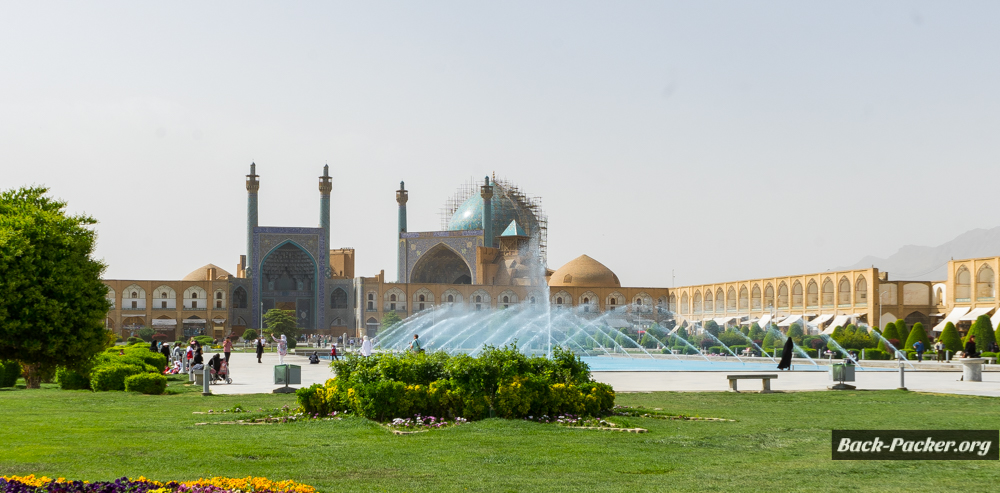
15) Shiraz – the diverse, cultural center
Shiraz has also once been the capital of Persia during the time of Karim Khan and is recognized as the cultural center of the country. The city is very liberal and has many beautiful parks e.g. the Eram Garden but also some significant historical sites such as Persepolis. When Backpacking in Iran you shouldn't miss out on Shiraz!
Shiraz is one of my favorite cities in Iran, during my time in the city I spontaneously decided to extend my stay for 4 more days. I was particularly impressed by the Nasir ol Molk mosque, Persepolis and the Shah-e-Cheragh shrine. I found the locals to be even more friendly and open than in the other cities I visited.
Check my video guide from Shiraz for recommendations of things to do in Shiraz and recommendable restaurants (see below)!
Top [mks_icon icon=”fa-arrow-up” color=”#444″ type=”fa”]
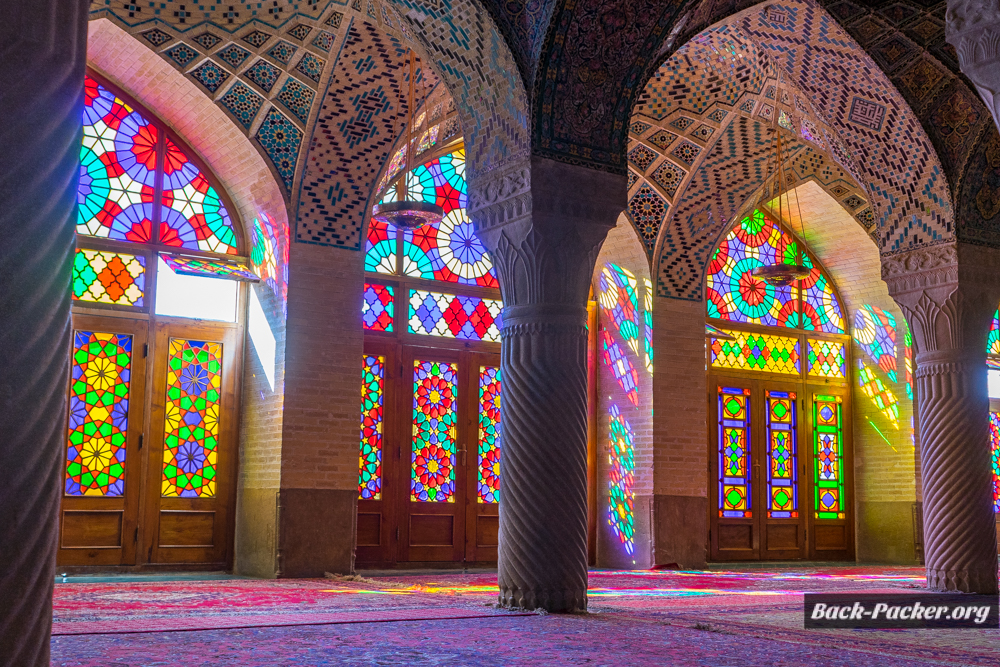
16) Yazd – the charming desert city
Yazd has a very unique vibe due to its location. The historical city center with its maze of narrow streets and windtowers is one of the biggest cities build almost entirely out of adobe in the whole world.
Beside the obligatory desert tour you shouldn't miss out on watching the sunset from the rooftops of the city – there are many lovely rooftop cafés to be found in the historical old town. Another gem are the towers of silence which are located a bit outside of the city limits.
Find all my recommendations for sights to visit in Yazd as well as restaurants in my video guide (see below)!
Top [mks_icon icon=”fa-arrow-up” color=”#444″ type=”fa”]
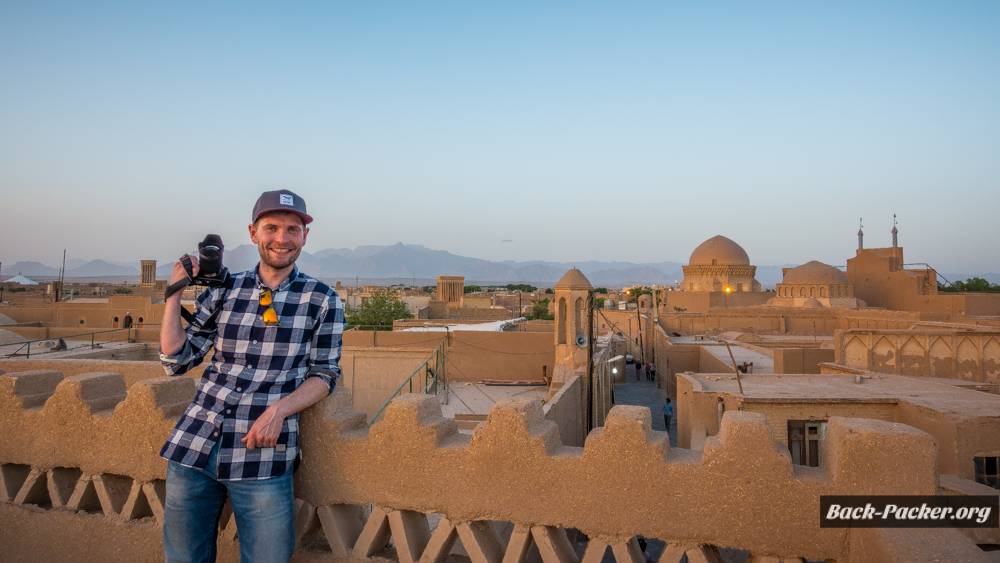
17) Kashan, Tabriz and Kermanshah
Unfortunately I ran out of time and couldn't make it to these destinations – take this as my extended list of interesting spots to visit. I plan to fill this gap with my next trip to Iran!
Kashan is situated close to Tehran and therefore a good choice for travelers who come with a very limited amount of time. The charming city offers many traditional houses, a beautiful mosque and a neat bazaar.
Tabriz is located in the north of the country and is the ideal base for exploring the green north and spots like Kandovan as well as for sightseeing in the city itself.
If you want to see a totally different side of Iran you should head to Kermanshah which is located in the Kurdish region – here you can experience the traditional lifestyle of a very unique culture and a very warm-hearted hospitality. Sounds tempting, right!?
Top [mks_icon icon=”fa-arrow-up” color=”#444″ type=”fa”]
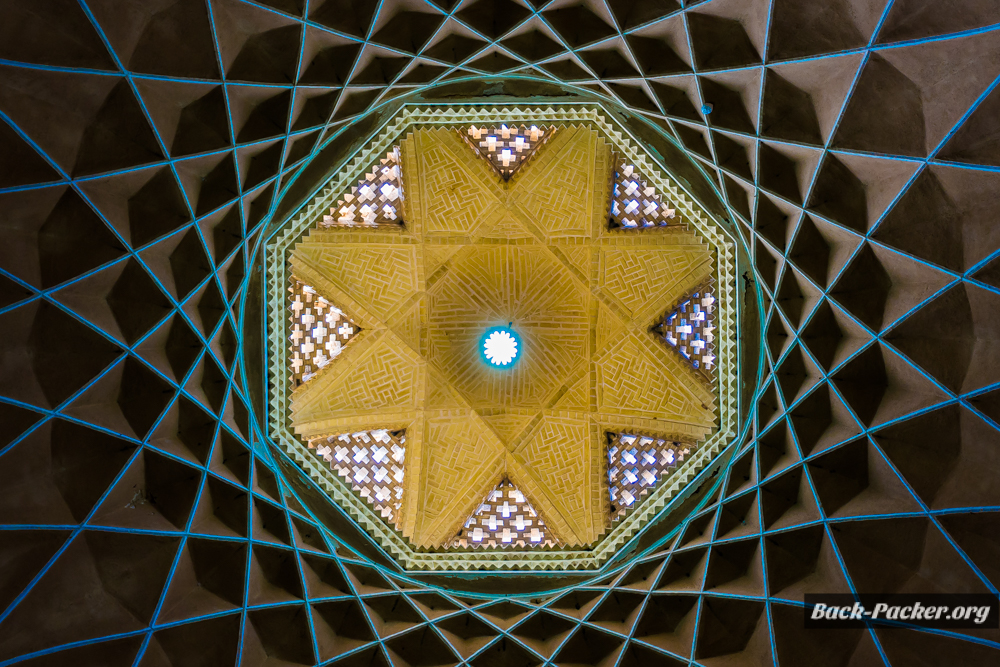
18) Recommended Iran Guide
If you want to come well prepared I suggest looking into the following guide book I used for my travels:
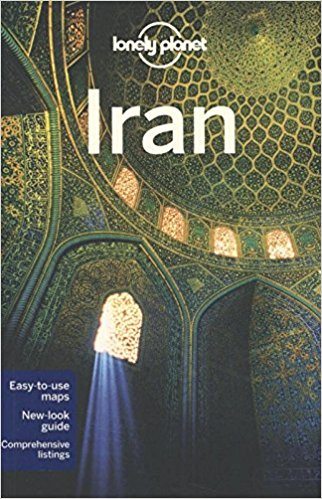
I used the old version of this guide for my time in Iran – the Lonely Planet is the #1 resource for this country! I used the LP for booking accommodation and for the addresses of hotels to put into my itinerary for the visa application. I found the many maps provided particularly helpful. Available for Kindle and/or the Kindle App for Smartphones and Tablets, too!
Top [mks_icon icon=”fa-arrow-up” color=”#444″ type=”fa”]
19) Video documentary series of my Iran trip
“Inside Iran” is a documentary series I filmed during my time in Iran introducing you to popular and unknown sights / things to do in Iran as well as the Persian cuisine and the super friendly locals my buddy David and me met on our trip from Tehran to Isfahan, Shiraz and Yazd.
The videos are filled with many additional practical information and tips for each city we visited and will give you an insight what backpacking in Iran feels like:
Top [mks_icon icon=”fa-arrow-up” color=”#444″ type=”fa”]
Anything to add to Backpacking in Iran?
I wrote this Iran travel guide based on my experience in of Backpacking in Iran. If you have been to Iran as well and you have some great tips and recommendation please feel free to leave a comment below. If you liked the guide and found it helpful, I would appreciate if you could share it with your friends or link to it from your homepage!
Disclaimer: This post contains Affiliate Links for services and products I’m using on my travels – therefore I can highly recommend using them. By using these links you won’t pay any additional fees!
Like it? Pin me!
